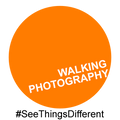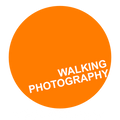Top Tips For Photographing Snow Scenes

March saw our first real, local snowfall of the winter (so pleased I forked out on those all weather tyres!🤣). April too is a month of eclectic and diverse weather, with snow not uncommon, especially in the hills, so maybe these tips could still come in handy...
Snow Photography...
Hello, it's snowing!
And it's very exciting because we haven't had much snow this winter, certainly here in Yorkshire. We usually have a little bit more and have a few more snow flurries than we've had this year. So it's really great to see and with that coming and with snow snow scenes often being few and far between I thought I'd try and get out a really quick video and share some of my top tips for photographing in the snow.
The first one is a really boring one but a really important one nonetheless. And that is to stay safe.
So when you've had a snowstorm and Snow's falling all around you, that is not the time to go exploring and create a new tracks and paths and and exploring places you haven't explored before. Walk places that you're really familiar with and walk well within your walking ability. Because it's not the time to have an accident.
My first photography tip (if you like) is to keep your composition simple. The great thing about snow is that it creates this wash of Simplicity if you like, this blanketing of snow allows you to create scenes and Landscapes that can sometimes, otherwise, be a bit cluttered and feel a bit busy. Allowing you to photograph it in a much more simple and minimalistic way.

So look out for those compositions that will really help create that kind of minimalistic feel and think about how many elements you're including in that framing of the photograph that you're taking. And you should be able to get some much more simple and enjoyable compositions.
My other tip is linked to last week's video on my two minute camera tips, which links back to exposure compensation. Now one thing when you're in a snow scene or a snow environment what your camera tends to do is to read the snow and turn it into a grey, because it's seeing all that white. Some cameras are a little bit better at recognising snow scenes now, but at the same time it's something to be quite aware of because what you'll find is actually that white snow that you're seeing, is your camera is actually turning it quite grey. So quite often with snow scenes you tend to want to over expose a little bit. Maybe by one stop just to make sure you get that sense of snow rather than a kind of a snow that looks like it's been under an exhaust pipe or something!
If you use your histogram to look at the exposure, you might want to make sure that it's shifted over to the right because then you know you're getting that kind of bright sense of the snow.
My next tip is a bit of left field. It's to not forget about the people in the scene, because actually quite often you'll find a lot of photographers will go to Great lengths to avoid having people in their scene and that's day in day out let alone snow!
But actually one of the things about it snowing, is it does tend to bring out the best of people and it can be a really great way of of putting someone in the landscape can be a really great way of highlighting the conditions and actually the interactions of people as well.
So don't miss an opportunity to reflect something in time and something of the people that are occupying that environment as well. It can be a really great record shots to include people whether they're having fun whether they're battling in the elements. Whatever they're doing look for that and don't be afraid to include them in the photos that you're taking.
And my last tip really is actually the one that I share on nearly every photo walk and every Workshop that I do and that is to think about what you're doing and stop yourself getting overwhelmed by the snow.
So when it snows we all get excited, I get excited, we get this kind of excitement when you're out with this camera and it can lead to really automated photographs that you haven't thought through properly. So the the trick is to sort of calm that that sense of excitement and look at things more analytically.
Ask yourself some questions to ensure that you're getting the best photo you can. You know, what is it about this photo that I want to take? what's the best way of getting that across with the composition that I'm choosing? Making sure that you're not just repeating what everyone else is doing with their camera phones that they're they're holding up in front of their faces.
You can take some great pictures with camera phones just think about how you want to photograph that with your camera phone. Is there a better way of looking at something? Because what you don't want to do is just repeat what everyone else is sharing photographs on.
You want your pictures to stop people in their tracks and maybe look at the photo and wonder how it was done, or just appreciate it a bit longer.
So asking those questions can really help you get a better photograph straight away.
Is there a moment in time that will make this photo better? Maybe it's a kid just as they've launched a snowball, maybe it's a moment of light? Maybe it's a bit of snow that falls from a tree. What's the timing, is there a timing element to the photograph I'm going to take? All those sorts of questions will help you think and look at the scene in a much more careful and constructive and creative way so those are just some quick tips that I thought would fire out and try and get out on a video for you before the snow melts so I hope you find them useful and I hope you get some great shots in this Lane
Subscribe to my Youtube channel here





Leave a comment